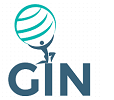Biochar, a type of charcoal, is extracted through the process of pyrolysis and carbonization, where it is generated as a by-product. This charcoal helps in increasing agricultural output, preventing soil-borne diseases, and improving soil quality. The high carbon content of this charcoal helps in improving the soil quality. Biochar based on batch pyrolysis kiln, gasifier and cookstove, microwave pyrolysis, and continuous pyrolysis technologies is being increasingly used to improve soil quality, which is deteriorating due to the extensive use of chemical fertilizers, large-scale mining activities, and faulty agricultural practices.
Moreover, the surging deforestation rate will also help the biochar market advance at an exceptional CAGR of 17.1% during forecast period. According to P&S Intelligence, the market generated $4.27 million revenue in 2015. Deforestation is primarily caused due to the large-scale adoption of commercial agriculture practices, such as the cultivation of oil palm and soya bean and cattle ranching, and local subsistence agriculture. The increasing use of forest land for agriculture practices weakens the topsoil layer and reduces soil fertility due to the loss of biodiversity.
In recent years, the governments of various countries and numerous non-governmental organizations have initiated multiple projects to encourage the usage of biochar in several soil-related applications. For instance, the International Biochar Initiative (IBI), a non-government organization, offers a platform for promoting stakeholder collaboration, environmental and ethical standards, and good industry practices to support biochar systems that are economically viable and safe. IBI aims to produce 1 billion tons of biochar per year up to 2056.
Globally, the North American region led the biochar market in the recent past due to considerable demand for agricultural products and the constant focus of the agrarian community on improving soil quality and increasing crop yield. Moreover, the rapid degradation in soil texture and quality, owing to the large-scale consumption of chemical fertilizers and extensive mining and deforestation, also enhances the consumption of biochar, because of its potential to reduce soil acidity and the quantity of nitrogen leaching into groundwater.
Thus, the degrading soil quality, escalating deforestation rate, and burgeoning demand for food crops are expected to create an enormous requirement for biochar globally.






















